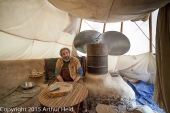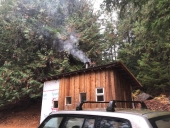




Ernie Wisner wrote:Actually your rocket stove should be considered as a system. the J tube part is only a piece of the whole When the barrel/bell goes on things change then when the thermal mass goes on things change again.
you put drag on the exhaust you put back pressure on the J tube. your fire slows down, an essential thing to consider is time, temp and turbulence. this catches lots of folks who want to modify the stove. in order to burn up most of the smoke you need it to be in the flame path for a period of time you need the gasses to mix and you need to have ignition temp.
What this means is you build a core that roars and the flame path is near the top of the heat riser. put a barrel on it the flame path is a little further down the heat riser then put the ducting in the thermal mass with the general couple corners that lowers the flame path a bit further. the shape of the feed and burn tunnel and the texture of the brick act with the wood to provide a good mixing then the residue gasses get mixed a second time when the stream from the heat riser hits the inside of the bell this puts the little bit of O2 in contact with the little bit of pyrolitic gasses remaining and re-burns. consuming all the wasted fuel (smoke) what remains is CO2 and water with a couple gasses that wont burn unless you get a real high heat going. I am not for creating a super stove that wont work half the time I want my systems to be robust and work all the time. so I consider the system rather than a component. Something for the super rockety folks to think on, time temp turbulence.





How permies.com works
What is a Mother Tree ?













148.84J Black wrote:I appreciate yr reply, Mr Dearborn, and yr absolutely right. I should really give more details.
Using the measuring points from the book, it is as follows:
Feed tube is 12.2cmx12.2cm and 23cm long (ash pit goes another 10cm down)
. 145.18J Black wrote:IBurn tunnel is 11.9cmx12.2cm and 33cm long
. 153.94 cmJ Black wrote:IHeat riser is 14cm in diameter and 80.6cm long.
J Black wrote:IThanks!















Success has a Thousand Fathers , Failure is an Orphan
LOOK AT THE " SIMILAR THREADS " BELOW !






|
The longest recorded flight time of a chicken is 13 seconds. But that was done without this tiny ad:
The new kickstarter is now live!
https://www.kickstarter.com/projects/paulwheaton/garden-cards
|







